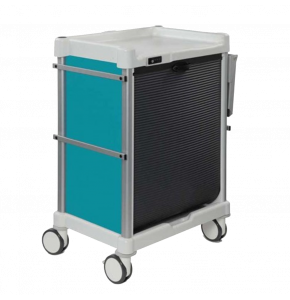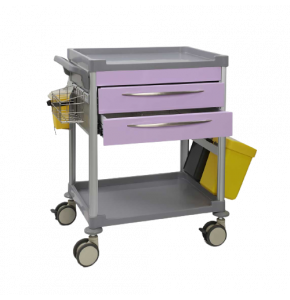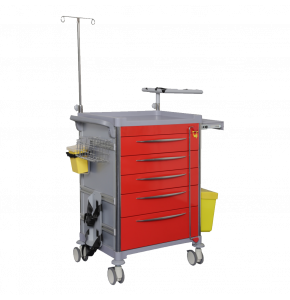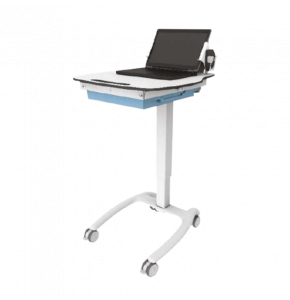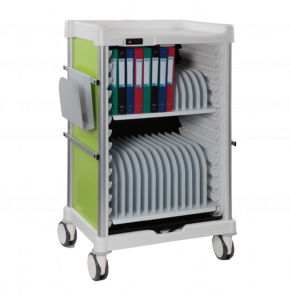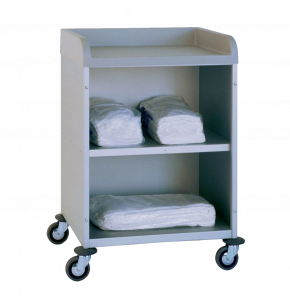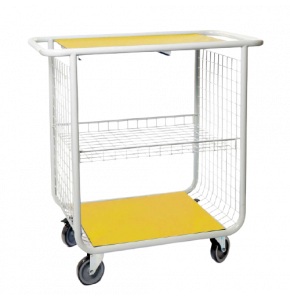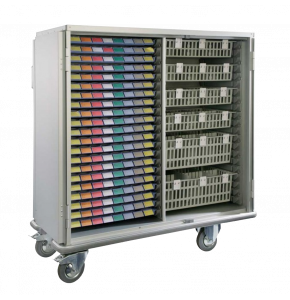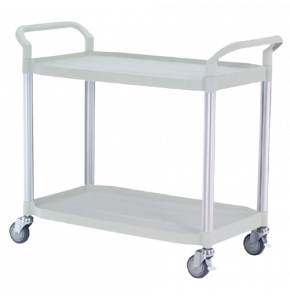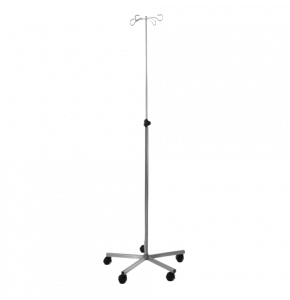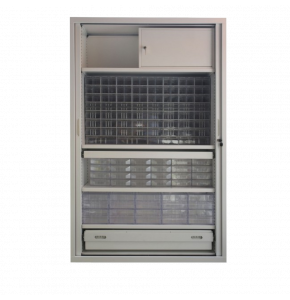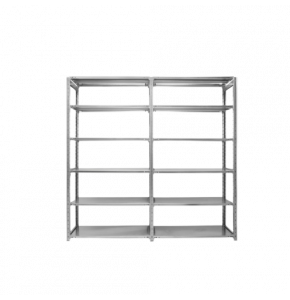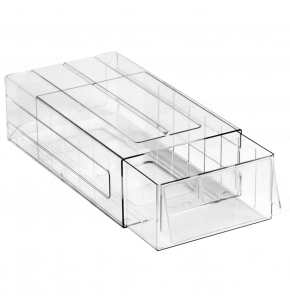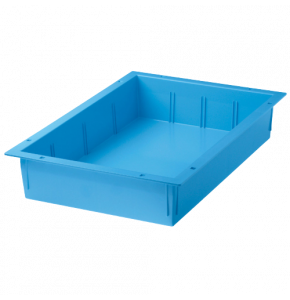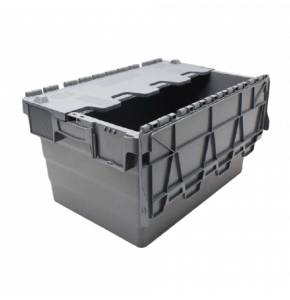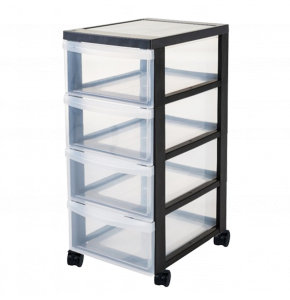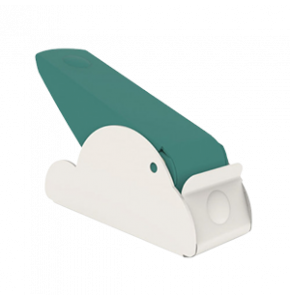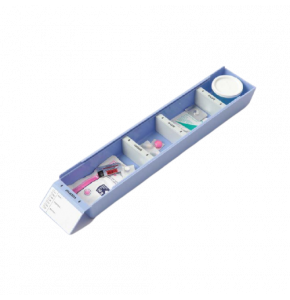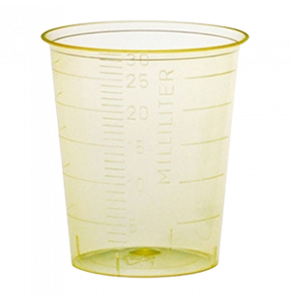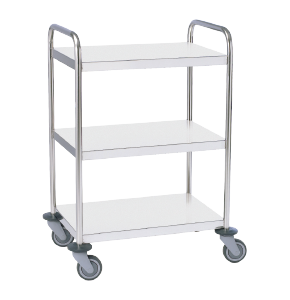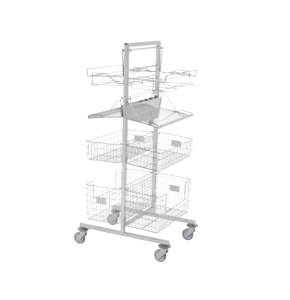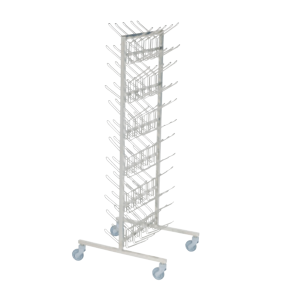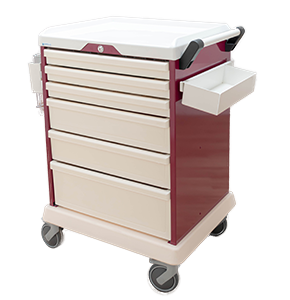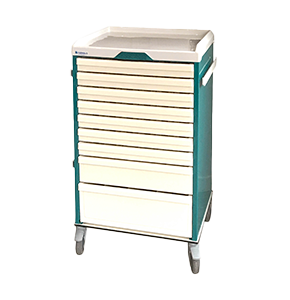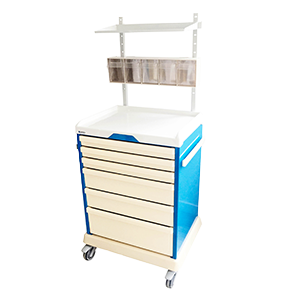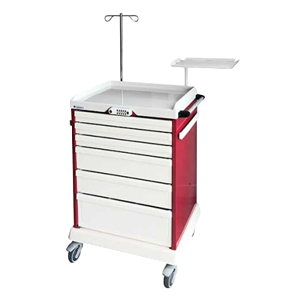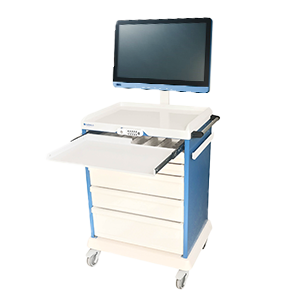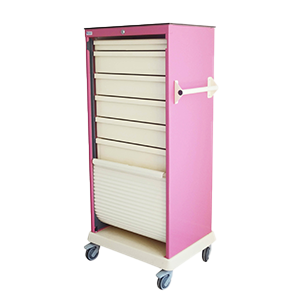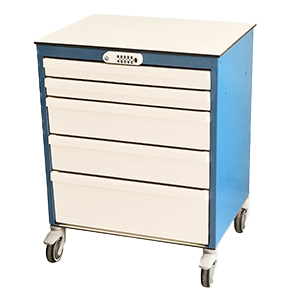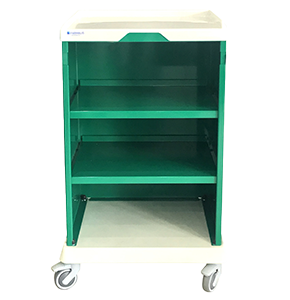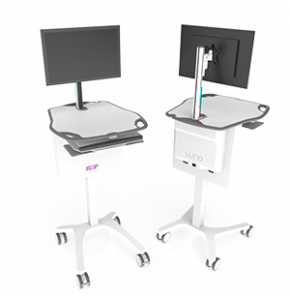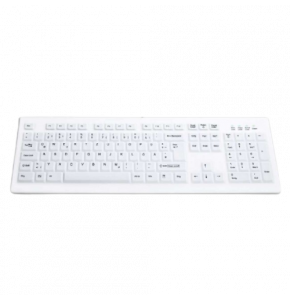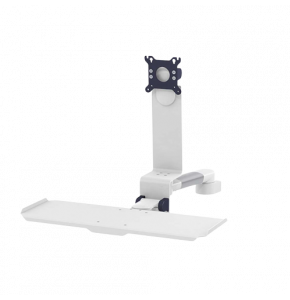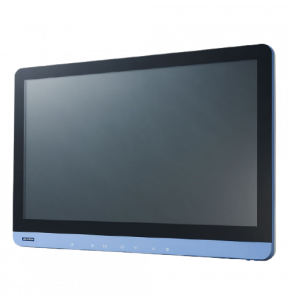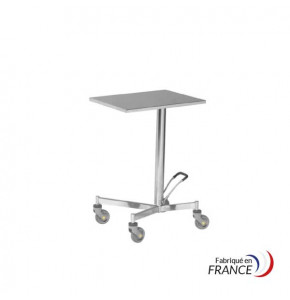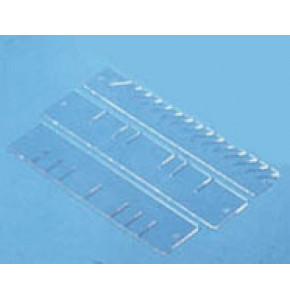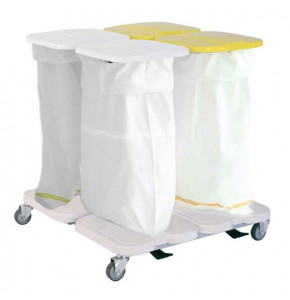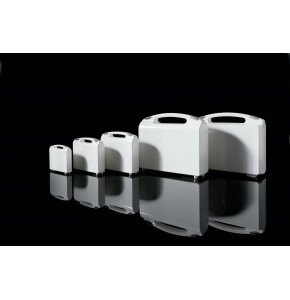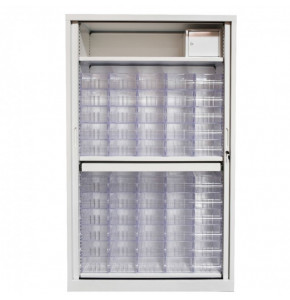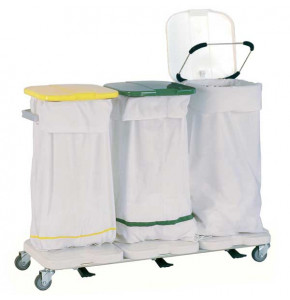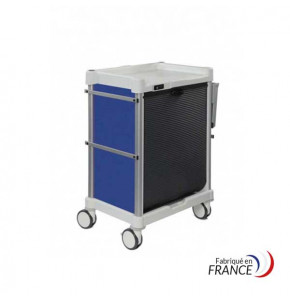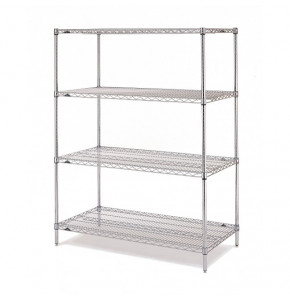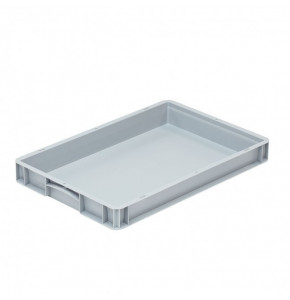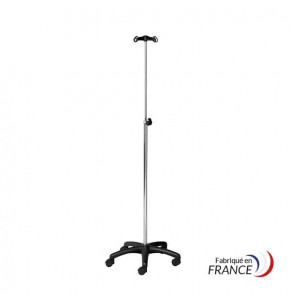Storage, dispensing: how to optimise the medication circuit in nursing homes
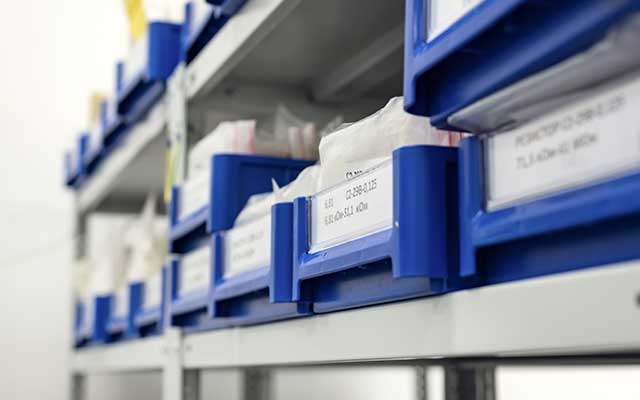
Where to store medicines other than the preparation of doses to be administered (PDA) and which ones can be pooled in Ehpad with in-house pharmacies (PUI)? Jean-Marie Vetel, a geriatrician, and Véronique Bertram, a pharmacist, recalled "the fundamentals of organisation" at the conference for coordinating doctors and coordinating nurses.
On the big screen, in front of the embarrassed but hilarious assembly, a photo of a pile of indiscriminately stacked medicines. A situation which, "of course, does not concern anyone in this room... because I am convinced that the medication circuit is absolutely perfect in all your Ehpads", joked geriatrician Jean-Marie Vetel, who is also director of medical policy for the GDP Vendôme-Dolcéa group, during his introduction.
Accompanied by Véronique Bertram, pharmacist at the DomusVi group's medical department, they gave humorous advice on the place of non-PDA drugs and the general organisation of stocks at the national conference of coordinating doctors and coordinating nurses, organised by the EHPA group on 19 November in Paris.
Five years ago, the introduction of blister packs and dose bags did not solve the problems of storage and traceability, said Jean-Marie Vetel. "In use, two concerns" remain, concerning about "30% of medicines in nursing homes", according to the geriatrician.
- Where to put specialities (sachets, patches, drops, tubes) that do not fit into the PDAs?
- How to decide on the pooling of medicines in the case of Ehpad with PUI?
An individual box for each resident
On the dispensing of non-PDA drugs, he deplored "a haphazard traceability", and the fact that they are "often placed in bulk, like potatoes, on the top of the trolley", which poses obvious safety problems for residents with dementia. He also insisted on the fact that non-PDAs "are not necessarily shared".
Jean-Marie Vetel therefore proposes "a standard of organisation": for each resident, an individual named box of a certain colour (according to the resident's unit) and of a certain volume in which to store what must be "a must", i.e:
- non-PDA or non-pillboxes
- the "if needed": laxatives or paracetamol (to be limited, as some of them "never end", according to Véronique Bertram)
- narcotics or morphine: the pharmacist specified that these "must be returned to the pharmacist if the prescription is discontinued, or if the resident dies or is hospitalised, and must be stored in a sealed safe with an access code in a secure room". Ideally, these medicines should be checked every month.
Another point of vigilance is the renewal of prescriptions: beware of the accumulation of medicines, Véronique Bertram advised, calling on the nurse coordinators present at the meeting: "Try to be attentive to the prescriptions sent to the pharmacists for renewal, so that they know not to dispense medicines already in stock in the resident's name locker, such as the five-pen boxes of insulin renewed every month, or the laxatives 'if needed', which continue to be dispensed regularly!
Do not pool more than "ten drugs
As regards pooling, Jean-Marie Vetel recommends that a list be formalised between the nurse coordinator and the coordinating doctor. It should concern prescriptions that are "risk-free, commonplace, frequent, concerning many residents each day, inexpensive, and in bulky packaging". He recommends "not exceeding ten drugs". For example, what fits into the "if needed" category can be taken out of the name box and put into the mutualised category, such as paracetamol or laxatives, but "of only one kind", he insisted.
For the geriatrician, however, there is no question of sharing prescriptions by name (antibiotics, drops, ointments, etc.) between residents, nor anything that "can be kept cold".
Anticoagulants were the subject of an aside: they cannot be "blistered" or shared, according to Jean-Marie Vetel, who recommended that they should not be stocked in the event of half or quarter of the prescribed doses, but that they should be recycled in the boxes provided for this purpose: "You say to yourself, 'It's expensive, I'm going to keep it', and you end up with trimmings of anti-vitamin K tablets", he commented.
Trolleys organised "on three floors
For cases where the pharmacy cannot immediately respond, the supplies for care or urgent needs must also be the subject of a list to be drawn up between the nurse coordinator and the coordinating doctor, in order to supply a buffer stock: "The prescription is made for the establishment. The nurse who uses it must trace the withdrawal and organise the restocking", Véronique Bertram explained, advising that this stock should be checked every quarter with the dispensing pharmacist.
Finally, the contents of the emergency kit should be limited to common "bobos": thread, needle, xylocaine. According to Jean-Marie Vetel, it is a matter of "anticipating the prescription of the corrector for each high-risk drug" in the resident's name box: provide vitamin K in the event of a prescription for antivitamin K for example.
With such an organisation, distribution is supposed to become child's play for the nurse: she will prepare in her trolley "the shared non-PDAs, the non-PDAs in individual boxes and, at the bottom, the blistered PDAs", he summarised.
Jean-Marie Vetel admitted that such an arrangement raised the question of the organisation of the trolleys, which should have "three levels". On the top, he advised placing "the tool for crushing tablets that do not have an alternative form in sachets", referring to the regional Observatories of Medicines, Medical Devices and Therapeutic Innovation (Omedit) for a reminder of the galenic forms available.
Source : « Stockage, dispensation: comment optimiser le circuit du médicament en Ehpad », par Claire Beziau. by Claire Beziau. Article published on 04/12/2015 in gerontonews.
 Francais
Francais 
 Cart
Cart Quote
Quote